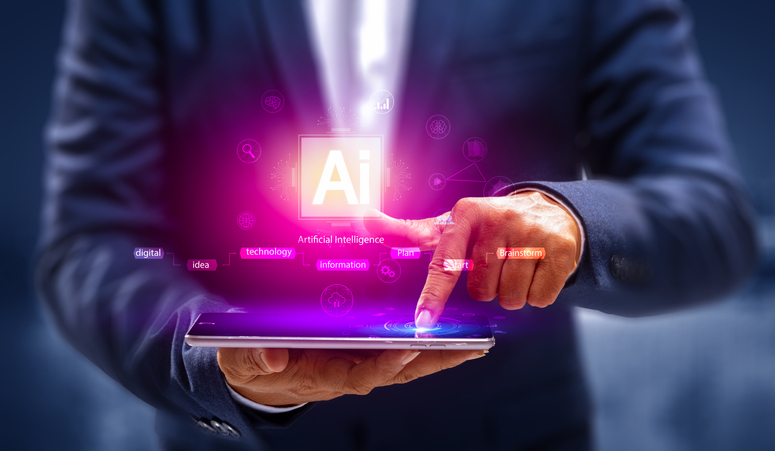Artificial intelligence has enormous potential to improve efficiency and innovation across industries. Yet for all its transformative potential, AI adoption rates continue to lag.
A 2023 survey by McKinsey found that 55% of organizations reported adopting AI in at least one business function. However, a Gallagher report found that only 21% of IT decision-makers are confident in their organization’s ability to implement AI applications.
Despite proven solutions readily available, what’s holding organizations back?
Common barriers like change resistance are well known, but findings from a 2024 survey by Yooz reveal industry-specific challenges also play a major role. The survey results explore perspectives on AI among U.S. professionals, confirming much of what has been observed first-hand: widespread anxiety is inhibiting adoption, negative perceptions perpetuated by media coverage present a trust barrier, and certain sectors like construction face distinct hurdles.
Widespread Apprehension Clouds Perception
Our survey asked professionals how they believe people broadly feel about AI. Nearly 3x more respondents said people are fearful rather than excited. This aligns with research showing risk perception tends to overshadow benefits for emerging technologies.
When asked about personal concerns related to AI business adoption, 41% felt it would primarily eliminate jobs. Despite proven net job creation long-term, it’s unsurprising automation evokes job loss fears post-pandemic.
The influence of media coverage also factors prominently. Forty-seven percent frequently encounter stories about AI risks and over half agreed news media tends to highlight negatives over benefits. The findings suggest negative narratives shape perceptions more than positive progress. And with respondents more inclined to discuss AI mishaps, misconceptions spread quickly.
The AI Adoption Dilemma in Accounts Payable Automation
Beyond broader business operations, the survey specifically explored perspectives related to AI-driven accounts payable (AP) automation solutions. Concerns here echoed financial decision-making worries, with transparency and oversight topping the list.
Over 60% expressed reluctance about ceding control of approval workflows and payment processing to AI algorithms without human checks and balances. Many were also unsure about data security with AI managing sensitive financial information.
When stakeholders understand AI-powered AP solutions augment rather than replace human decision-making, while providing air-tight security and audit trails, trust and usage grows.
Construction: An AI Laggard
The research also revealed differences in AI acceptance across sectors. Both construction professionals and respondents overall ranked construction as the industry most resistant to AI. Take accounts payable processing which remains predominantly manual in construction. AP staffers waste hours interpreting handwritten invoices, chasing missing documents, and correcting errors. Yet despite proven AP automation solutions, adoption in construction has been slow.
In contrast, healthcare and tech are leading AI adoption. So why is construction lagging? Labor shortages, fragmented processes, thin margins, and technology hesitation all play a role.
And rather than seeing AI as an innovation opportunity, construction respondents were more aware of potential fraud use cases. Addressing the knowledge gap with more balanced perspectives tailored to construction could pave the way for change.
Assuaging Fears in Business Operations
Beyond job impact concerns, survey findings suggest apprehensions permeate business operations and finance functions. Over 90% expressed worries about relying on AI for financial decisions like lending.
Transparency, accountability, and bias ranked among top concerns—and rightfully so. I’ve seen algorithmic bias lead to scrapping of AI recruiting tools and lawsuits. The “black box” nature of some algorithms increases mistrust.
Legal and ethical risks also give pause. Over half in the survey said employers should be liable for AI cyber fraud impacting work devices. And many were leery of AI in hiring without safeguards against bias. Twenty-nine percent said that if AI was used in a company’s hiring process and was determined to exhibit unintentional bias against certain demographics, the company should “scrap the AI system entirely and revert to traditional hiring methods.”
Progress Hinges on Transparency and Trust
In the face of these adoption barriers, how can HR leaders spur progress? Education and transparency are key:
- Showcase more AI success stories relevant to each industry. Counteract fears by demonstrating real-world benefits.
- Clarify safeguards. Explain governance, ethics reviews, and bias testing protocols to instill confidence.
- Involve stakeholders proactively. Seek input to identify concerns early and adapt AI responsibly.
- Offer AI skills training. Equip people to work alongside AI through upskilling programs.
The key to increasing productivity and efficiency through AI adoption lies with constructive dialogue and collaborative solution-building. Meet workers where they are and address root causes of distrust.
The AI adoption dilemma ultimately presents an opportunity—a chance to build understanding, shape adoption responsibly, and realize benefits through strategic communication and change leadership.
Laurent Charpentier graduated from the Massachusetts Institute of Technology (USA) and INSA Lyon. Before he started Yooz, he worked as Solution Lead Architect and Lead Consultant for Accenture, and Business Analyst at Dell Inc. Laurent became a part of the Yooz family in 2015 when he started as Yooz NORAM COO and CIO in 2016 to lead business development of the company in the USA, where he hired sales and marketing leaders to complement his technical background. He was able to successfully create a strong foundation for the business while also being involved on the product side in integrations and innovation. After five years leading NORAM operations, he was promoted to CEO.

